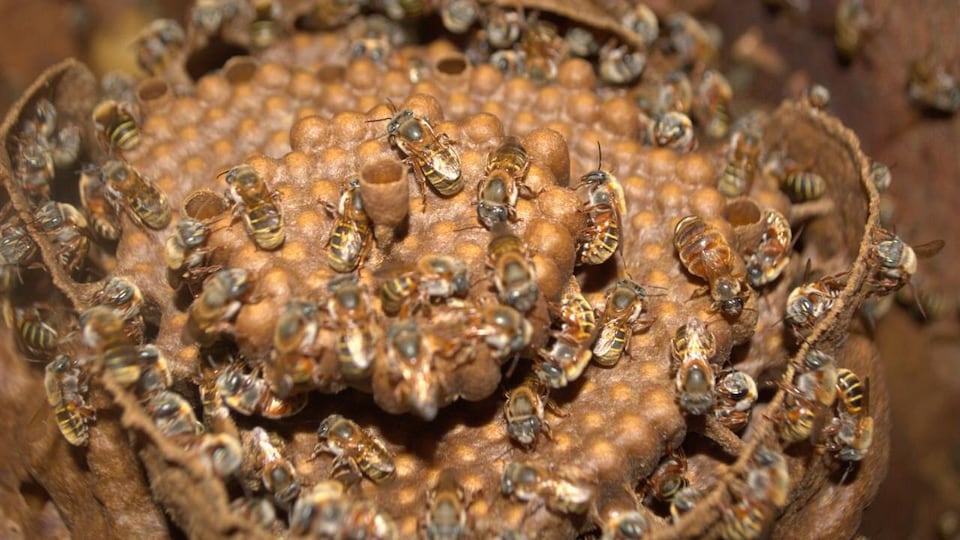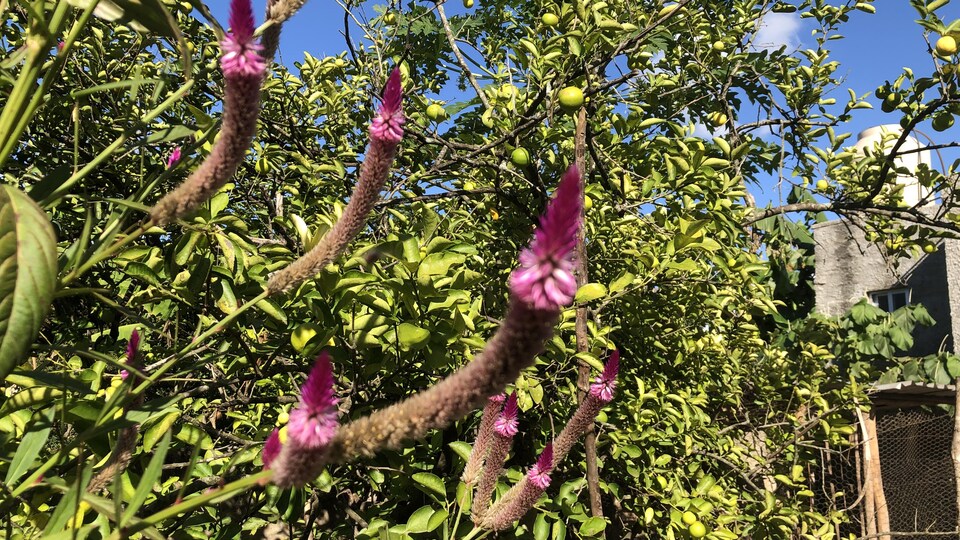
Mexico is a major producer and exporter of honey; the industry is concentrated mainly in the Yucatan peninsula.
For several years, beekeepers have complained about threats to their bees, caused by the deforestation of the Maya forest for the benefit of intensive corn and soybean cultivation, which requires the widespread use of chemical pesticides.
Investigating the phenomenon leads us to the discovery of an ancient, sacred species of bee, endangered until recently, but has since experienced a rebirth: the rare melipone.
Ah Muzen Kaab, god of life
The melipone bee – Melipona beecheii, mainly; there are about 40 varieties – no stinger; it doesn’t hurt. She is very sociable and she rarely gets angry because, as Maya says, she has been used to people for millennia.
The deity of life, Ah Muzen Kaab (in Maya), peaceful and kind, is the same in writing, calendar and medicine. The ancient Maya used its honey as a remedy during rituals, but they also ate it in the form of sugar or fermented drinks. They raised these sylvan bees on pieces of tree trunks and, hundreds of years later, they still do, but they prefer square hives, which are more convenient to open or close.
Somewhat smaller than the European bee (Apis mellifera), melipone produces 1 liter of honey per year, against 35 for the average bee, which explains why, at 19at century, Mayan beekeepers left it for honey -producing plants.
A blonde with blue eyes
The workers have blue eyes, while the queen and the men have black eyes. There is only one guard at the entrance of the nest, a hole less than a centimeter, which disappears with each entry or exit. Their broods are overlapping circular combs reminiscent of – or inspiring, some say – the Maya for their pyramids.
Honey is found in small bubbles or amphoras; it is harvested with a syringe to keep it pure. Like honey, propolis (a type of mortar) has medicinal properties that should still be seriously studied.
This is what biologist Aurora Xolalpa is beginning to do in her new laboratories at the Mayan Intercultural University of Felipe Carrillo Puerto, in the state of Quintana Roo. Students working in the apiary and laboratories will become future researchers or melipone beekeepers, quite simply.
This is the case of Fani Arguello, from Mani, in the Yucatan, who studied at this university before starting melipone bee care in his extensive garden, his mipa abundant in flowering.
Mayan honey got lost. We rescued the honeycombs; they are on the brink of extinction, said Fani Arguello. But that could change.
The rebirth of the melipone
At the origin of this renaissance: a Frenchman, Stéphane Palmieri, hotelier in Tulum, in Quintana Roo, and beekeeper since childhood. He went in search of ancestral melipone hives, he found three of them and he started to reproduce.
The idea is to multiply colonies in order to multiply them. We need a fairly large genetic heritage. We reproduced many colonies that we distributed to Mayan communities, said Stéphane Palmieri.
It is now necessary to recognize honey and melipone products, as well as its millennial and heritage value. And also that the species is protected from deforestation, intensive, sometimes transgenic crops and pesticides; like all Yucatan bees, for that matter.
All the bees are in danger
This is the beginning of our investigation. South of the Yucatan Peninsula is the state of Campeche. Between 2010 and 2020, the peninsula lost more than 80,000 hectares of forest, according to Global Forest Watch, more than half of it in this state, in favor of corn and soybean plantations.
About 80% of this land was exploited by the colonies of the Mennonite sect that fled to Manitoba in the early 20th century and then the state of Chihuahua in the 2000s for fat, watered and cheap.
The community, however, clashed in 2012 with beekeepers in the region who accused it of conducting excessive deforestation, training transgenic crops and using pesticides. They succeeded in banning transgenic bones, but it was not respected.
The state of Mexico is responsible, says agronomist and beekeeper Juan Antonio Villaseñor, because it does not provide enough seeds and does not control the use of pesticides.s.
In question: glyphosate, including anti-GMO Mennonites [organismes génétiquement modifiés]like Cornelius Loewen, of the colony of Santa Rosa, could not do without.
Demanding customers in Europe
The approximately 3,000 beekeepers in the Yucatan are also angry with the industry, which is concentrated in seven or eight companies, for poorly paying for their honey and for not being sufficiently vigilant in terms of quality control. However, it puts exports in jeopardy, as large customers-such as the Germans or the British-are discovering more and more traces of GMOs and pesticides.
In response, the Association of Agronomist Beekeepers Villasenor has organized to set aside 10% of its organic honey for the off season (not flowering) and market it itself. It also produces Italian queen bees to improve the production quality of hives in the Yucatan state.
Yucatan federal senator, Jorge Carlos Ramírez Marin, made the health of bees his main theme of the electoral campaign.
First the bees, then civilization will disappear, and the planethe argues, knowing that bees are 70% pollinators of all plants and crops. Our farmers who deforest to produce more have to spend more on pollination.
Source: Radio-Canada



